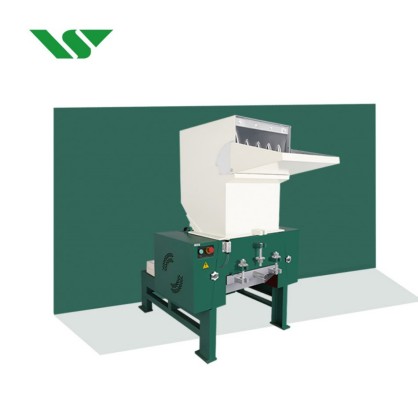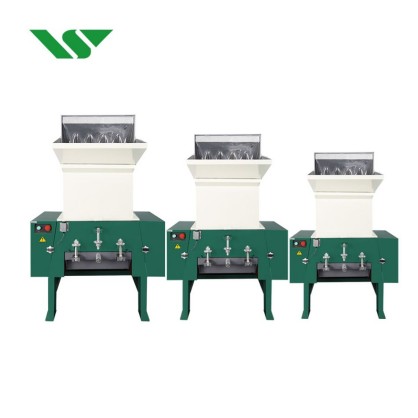How to Choose the Right Plastic Crusher Manufacturer
2025-03-17 Page view:
In the plastic recycling and regeneration industry, plastic crushers are one of the key pieces of equipment. However, with so many manufacturers on the market and varying levels of equipment performance, selecting a reliable crusher supplier can be a challenge. This article provides a comprehensive guide to help businesses make an informed decision when choosing a plastic crusher manufacturer. We will consider demand alignment, technical verification, cost optimization, and industry trends to offer a systematic selection approach.

1. Understand Your Needs: From Material Characteristics to Capacity Planning
The first step in choosing a crusher manufacturer is to accurately define your needs. Consider the following factors:
Material Type: If you are processing rigid plastics (like PA66, PC), you will need a high-torque roller. For films, anti-winding designs are essential.
Processing Capacity: Select a model based on the scale of your production line. For instance, small-scale machines might process 100-500 kg/h, while industrial models could handle 1-5 tons/h.
Particle Size Requirements: Ensure the machine produces the right size particles for further processes, such as pelletizing or injection molding.
It is recommended that manufacturers provide test samples of similar materials. Verify the equipment's suitability by measuring particle size distribution, impurity content, and other relevant metrics.
2. Assess Technical Capabilities: From Patents to Process Innovation
The core competitiveness of top manufacturers lies in their technical expertise:
Material Technology: Check whether the screws and blades are made of dual-metal composites or have been nitrided, as these treatments directly affect durability and lifespan. For example, WenSui Group’s “dual-metal casting technology” has tripled the lifespan of screws.
Automation and Smart Features: Equipment that includes energy monitoring and overload protection can reduce maintenance costs by 15-20%.
Certification: Opt for manufacturers with ISO9001 quality certification and patented technologies. For example, WenSui Group holds over 50 patents in the field.

3. Evaluate Cost-Effectiveness: Full Lifecycle Cost Model
Instead of comparing only equipment prices, it is essential to evaluate the total cost of ownership, which includes the following factors:
| Cost Item | Description | Estimated Share |
|---|---|---|
| Equipment Purchase | Includes transportation and installation fees | 45%-50% |
| Energy Consumption | Motor power × operating hours × electricity cost | 25%-30% |
| Maintenance | Blade replacements, bearing maintenance | 15%-20% |
| Downtime Loss | Capacity waste caused by equipment failure | 5%-10% |
This model helps reveal that a higher-priced, low-failure-rate machine might save more in the long run, reducing overall costs by over 20% compared to a cheaper, energy-hungry alternative.
4. After-Sales Support: From Response Time to Local Assistance
Focus on the following aspects of after-sales support:
Spare Parts Inventory: Check if the manufacturer has regional warehouses in key industrial areas (e.g., Dongguan TaiZhang Machinery maintains a 4-hour emergency response circle in the Pearl River Delta).
Technical Training: Ensure the supplier provides systematic training on equipment operation, daily maintenance, and troubleshooting.
Upgrade Support: Look for manufacturers who offer support for line upgrades, such as blade material changes or motor capacity enhancements.
5. On-Site Verification: A Three-Step Evaluation Process
Factory Inspection: Observe the production process and quality control measures in place (e.g., WenSui Group’s smart workshop ensures tolerance precision of ±0.01mm).
Customer Case Studies: Investigate the actual performance data from similar customers. For instance, a PET bottle sheet manufacturer improved machine uptime from 400 hours to 1200 hours by switching blade materials.
Test Runs: Conduct extended tests (over 8 hours of full load operation) and record key parameters like temperature rise, noise, and vibration levels.

The plastic machinery industry is rapidly transitioning towards smarter, more energy-efficient solutions, with the market expected to surpass 14 billion yuan by 2025. When choosing a crusher manufacturer, it’s essential to balance current needs with future expansion possibilities. By following a comprehensive evaluation approach, companies can select a reliable partner who will support both immediate production requirements and long-term business growth.



